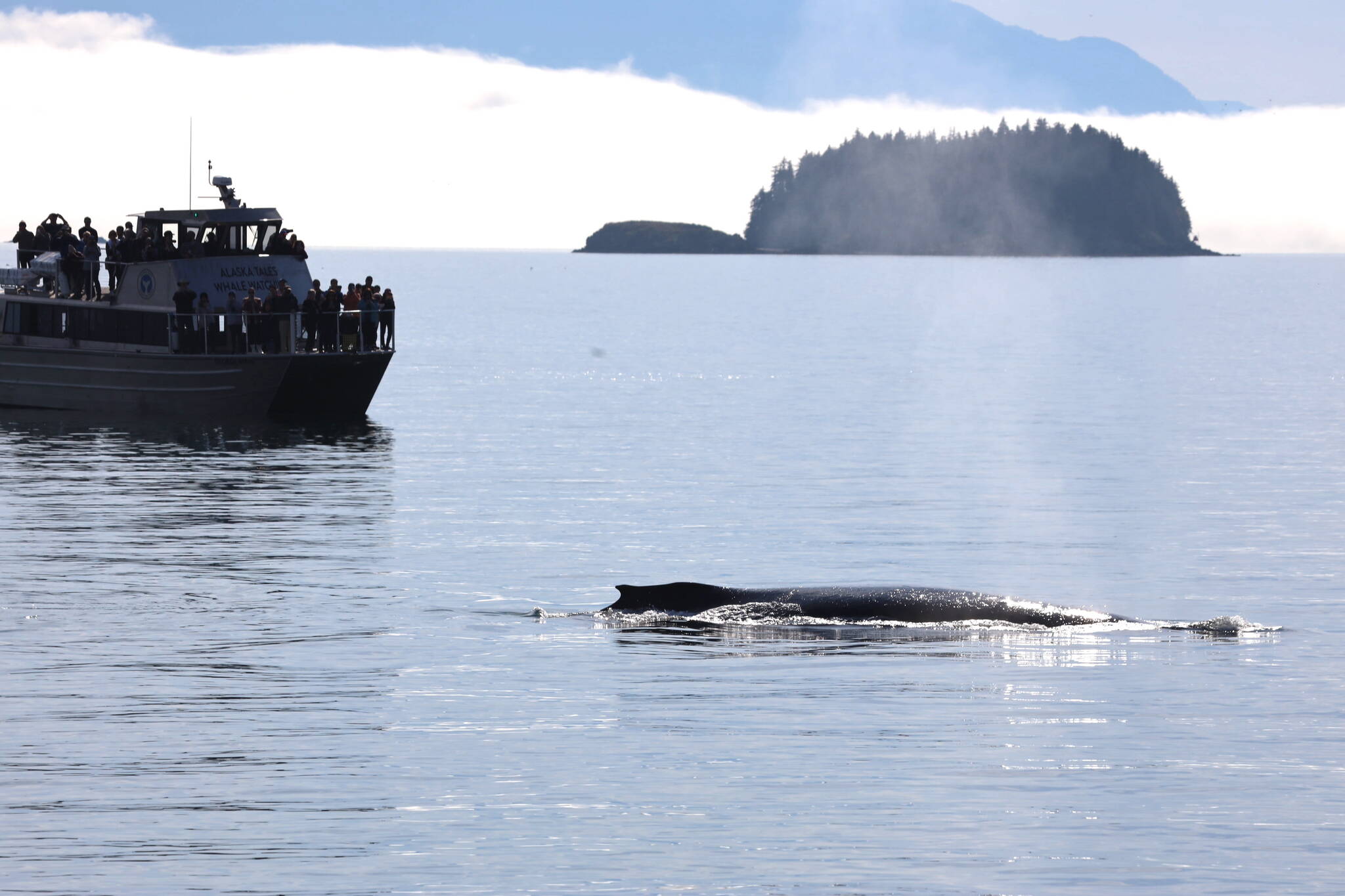A group of local whale watching businesses in Juneau are proposing a set of voluntary recommendations they say will further address concerns raised this summer that the fleet is negatively impacting Juneau’s harbors, waterfronts and the whales themselves.
On Monday the chair of the group that created the recommendations, Bob Janes with Gastineau Guiding, and Suzie Teerlink, a marine mammal specialist and NOAA’s Alaska coordinator for the Whale SENSE program, shared the proposed recommendations with City and Borough of Juneau Assembly members.
[Unlimited numbers of whale watching boats causing wave of concern]
The recommendations, if accepted, would be adopted by the CBJ Tourism Best Management Practices, a program intended to minimize the impacts of tourism from both residents’ and industry concerns. If approved, the recommendations would be implemented in 2024 and include limiting the number of vessels surrounding whales, eliminating “whale sighting guaranteed” marketing between April 1- May 15 and Sept. 15 – Oct. 31, and navigating Coghlin Cut at 5-7 knots when other vessels are present, among others.
All recommendations would be voluntary, as being a member of TBMP is voluntary. Of the approximately 72 whale watching boats in Juneau — owned by various businesses — 24 businesses are members of TBMP. In 2015, NOAA developed the Whale SENSE Alaska program, which is also a voluntary program dedicated to promoting safe and responsible whale watching practices, and provides recognition for companies who follow these guidelines. Many operators in Juneau also participate in the program.
Currently in Juneau, whale watching boats already face some regulations, notably the 2001 federally mandated minimum safe distance from humpback whales of 100 yards — equivalent to about eight school buses. Whale watching boats are also forbidden from remaining at a fixed location while watching a single whale or group of whales for more than 30 minutes, and have specific speed limits and traffic corridors they operate in to reduce wake and disturbance.
Despite those regulations, however, there are no prohibitions on the number of boats that can be out on the water and watching those whales from 100 yards. That is a problem targeted by residents this season, city officials say, and something that would be addressed by the new recommendations presented on Monday by the group.
“We won’t have more than eight vessels trying to scrunch into that 100-yard area, they will need to wait their turn to go in,” Janes said. “And it would give those eight boats within that boundary more room to maneuver should the whales come towards them.”
According to Teerlink, Juneau has the largest whale watching industry in the world despite having far fewer whales than other whale watching destinations.
Hervey Bay, Australia, which has a population twice the size of Juneau and promotes itself as the “Whale Watching Capital of the World,” has a total of 12 whale watching boats (reduced from 18) for the 1,200 whales that visit over the season.
Currently, Juneau has 72 whale watching boats, but only approximately one-tenth the number of whales that visit over the season compared to Hervey Bay, Teerlink said.
On Monday, Teerlink applauded the group’s efforts to create recommendations that would further address industry impacts. However, she said there is no clear way to gauge whether those recommendations will prevent “take” from occurring. Take is defined as any action that could potentially injure or disturb a marine mammal, causing disruption of behavioral patterns.
Teerlink said NOAA has management jurisdiction such as regulating distance to whales, vessel speed restrictions and underwater sound limitations, but restrictions like limiting the number of boats are not under its authority to implement.
“We (NOAA) cannot control how many people operate businesses in Juneau, we can’t control how many boats are utilizing state water, and if NOAA were to explore regulatory solutions to these concerns they would have to be framed into the context relative to the whales themselves,” she said.
Teerlink said NOAA recommends CBJ investigate ways to help the industry secure a more sustainable model and to ensure that the industry reduces as much take as possible, but noted there is concern that adoption of further regulations could devastate the industry in Juneau.
“For example, if NOAA were to limit the number of boats around whales, where would all the other boats go? What would they do with their time and what would happen if they promised to see a whale, but there were too many boats to stop?” she said.
• Contact reporter Clarise Larson at clarise.larson@juneauempire.com or (651) 528-1807.

